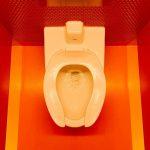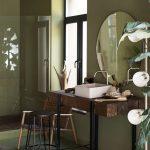When initiating a bathroom renovation, plumbing is often an overlooked factor. Yet, proper planning and attention to this essential aspect can transform your bathroom into a highly functional and convenient space. Undoubtedly, careful selection and placement of your plumbing elements significantly influence your daily routines. So, let’s get started on how to plan for a functional bathroom space!
Contents
- Meticulous Bathroom Space Division
- Skirting the Dual Vanity
- Inclusion of Shower Ledge
- Revamping a Small Bathroom
- Creative Approach to Lighting
- Transforming with Bold Designs
- Replacing Tub with Shower
- Adequate Extra Cabinet Installation
- Impactful Black&White Tile Selection
- Laundry and Bathroom Swap
- Embracing Vintage Bathroom Touches
- Bathroom Nostalgia with Fireplaces
- Renovations – A Journey of Transformation
- Frequently Asked Questions (FAQ)
Meticulous Bathroom Space Division
No renovation project begins without a careful division of space. When handling a bathroom remodel, it’s essential to understand the layout of pipes and drains in order to organise your bathroom effectively.
This is where architectural design comes into play – marking the spaces for the bathtub, shower, sink and other plumbing elements according to the nature of the room.
You’ll also want to consider cabinetry in the room’s measurements– not all bathrooms have sufficient built-in storage. Cabinets not only offer strategic spots to stash daily items but also add an aesthetic appeal if chosen thoughtfully.
Remember that managing space efficiently leads to a more seamless flow in your renovated bathroom. You will appreciate this when indulging in leisurely bathing activities.
Skirting the Dual Vanity
With family-sized bathrooms becoming increasingly popular, dual vanities are almost verbose. These double up as workstations for multiple people using the bathroom simultaneously.
The dual vanity brings in a sense of symmetry and room for personal space. Carefully consider the plumbing requirements, as each vanity will require its dedicated plumbing lines which will have to be factored in at the design stage.
Avoid clustering around the sink area by ensuring that the water spouts and taps are conveniently positioned.
Inclusion of Shower Ledge

Speaking about convenience, a shower ledge’s functional benefit can not be overstated. This feature serves as an elegant solution for storing your bathing essentials.
Plan your plumbing accordingly to include this occasionally sidelined marvel which could be tiled in a material matching or complementing the other elements of your bathroom. Best of all, it doesn’t take up much space!
On average, around 78% of homeowners planning a bathroom renovation include an update to taps and plumbing fixtures. So why not be part of this majority and consider incorporating an innovative feature like a shower ledge?
Revamping a Small Bathroom
Looking to give your small bathroom a new lease on life? Upgrading fixtures and fittings such as the toilet, sink, shower, or bathtub can work wonders.
Bathroom remodels yield a 60% – 68% return on investment when you sell your home so that small space deserves some special attention! Transform it into a stylish alcove that reflects your personal taste while remaining practical.
The National Kitchen & Bath Association (NKBA) recommends spending between 5% – 10% of your home’s value on a bathroom renovation. Making strategic choices in design and fixtures can make this a worthwhile investment.
Creative Approach to Lighting
Proper lighting is key to enjoyable bathroom routines, whether it’s for makeup application or relaxing baths. Utilize direct natural daylighting where possible, along with innovative lighting fixtures and design.
Over 90% of renovating homeowners change their bathroom style during their project – lighting can play a major part in this transformation. Remember, the feel of your space can be greatly influenced by the light that fills it!
Transforming with Bold Designs

If ever there were a time and place to be creatively bold with designs, this is it! Annabelle Selldorf, an acclaimed interior designer and architect, suggests using elements such as mirrors and decorative arts to add personality.
Incorporating a fireplace mantel or destination resort-inspired elements may seem unconventional but can ramp up the bathroom’s overall aesthetic appeal. It’s all about making that refreshed bathroom uniquely you.
Replacing Tub with Shower
To many homeowners, the combined bathtub shower is no longer satisfying enough. A dedicated shower is increasingly preferred because it saves space, is more convenient, and has less water consumption.
Replacing a tub with a shower involves careful planning as these are usually larger and require different plumbing setups. The challenge lies in placing vents and drains properly so that there is convenient access to water control valves.
Ceramic or porcelain tiles are preferred by approximately 65% of homeowners for bathroom floor renovations due to their durability, aesthetic value, and easy maintenance.
Adequate Extra Cabinet Installation
We can’t stress enough how crucial it is to have ample storage space in your bathroom. Renovations provide a unique opportunity to assess your storage needs and plan out how you can creatively integrate extra cabinets into your bathroom’s architectural design. According to your preference and room layout, you can opt for floor-to-ceiling cabinets, mirrored cabinets, or even under-sink cabinetry.
Bathroom cabinets not only serve functional purposes but can also be transformative in terms of interior design. They give a sense of orderliness, making the bathroom appear tidier and more spacious. Given all these probable benefits, it’s not surprising that HGTV suggests investing in high-quality cabinetry during remodels.
A noteworthy point here is the National Kitchen & Bath Association (NKBA) advising homeowners to spend 5% to 10% of their home’s value on a bathroom remodel. With that guidance in mind, allocating a significant part of this budget for cabinetry installation seems logical. But remember – quality doesn’t always mean expensive; you might find affordable options that offer a perfect blend of style and functionality.
Lastly, ensuring these cabinets match seamlessly with your overall interior vision also matters. And don’t forget proper daylighting for those early morning beauty routines!
Impactful Black&White Tile Selection

Tiles play an integral role in giving bathrooms their desired flare—be it modern or vintage. Furthermore, around 65% of homeowners prefer ceramic or porcelain tile for bathroom floor renovations, further cementing tiles’ importance while renovating bathrooms. One timeless choice that never fails to enamour is the classic black and white tile combination.
In essence, black and white tiles offer a unique blend of minimalistic elegance and dramatic contrast. The colour combination’s versatility means it can fit effortlessly into varying design philosophies—from eclectic and vintage to industrial and modern. And, additionally, these tiles provide ample opportunities for customisation. Like chessboard patterns or alternating stripes? Or perhaps a more abstract design? The choice is yours!
When planning your renovation budget, bear in mind that the typical cost range for these projects lies between $5,000 and $15,000, with an average cost of $10,000. A well-thought-out tile selection can significantly impact not only your bathroom’s appearance but also your property’s overall value – with statistics showing an approximate 60% to 68% return on investment upon selling the home.
Hence, it can be wise to invest in high-quality tiling—both for its durability and aesthetics. However, like all things, balance is crucial – set a budget for this aspect of your renovation that aligns with your overall project budget.
Laundry and Bathroom Swap
Let’s consider one of the increasingly popular renovation ideas – laundry and bathroom swap. This switch essentially provides homeowners with more space while keeping function and form at the forefront. Scottish architect Annabelle Selldorf is famous for her ingenious use of room swaps in her architectural designs. Who says we can’t draw inspiration from such notable figures?
Laundry rooms are typically under-utilised spaces in homes—occupying prime real estate without delivering equivalent value. On the other hand, bathrooms are often pressed for space. Swapping these rooms can significantly resolve both issues – giving your bathroom its much-needed breathing room.
Additionally, this swap synchronises plumbing systems – as both spaces make extensive use of tap and drainage. According to some statistics, approximately 78% of bathroom renovations include an update to taps and plumbing fixtures. Hence, a laundry-bathroom switcharoo could cover multiple bases and stretch your renovation dollars further.
However, it requires careful planning. After all, the NKBA states that the average time required to plan and design a bathroom remodel is about 18 months. Review your home’s architectural blueprint, envision the possible arrangements, consult professionals if needed, and ensure a hassle-free room switch!
Embracing Vintage Bathroom Touches
Vintage-style bathrooms are all the rage—their timeless elegance and character make them an enduring favourite. Whether you’re going full vintage or simply wanting to incorporate vintage elements into a more modern design – fine touches from yesteryears can undoubtedly breathe soul into your bathroom’s aura.
You could start with accessories. Ornate mirrors, soap dishes, or even towel bars can transport you back in time without feeling contrived or out of place in today’s world. For larger renovations, installing a clawfoot bathtub rather than a standard built-in model can be both functional and decorative while adding some vintage charm.
Nearly all of us look to break free from our day-to-day grind with leisure activities occasionally. Drawing a warm bath with calming aromatherapy salts at the end of a taxing day is quite a luxury. Whereas minor bathroom renovations have a return on investment of approximately 102%, it’s easy to see the significant benefit of bonus luxury touches such as clawfoot tubs.
Therefore, combining functionality with aesthetics should be our mantra during renovations. And doing so in a budget-conscious way that doesn’t go over your estimated renovation costs of $5,000 – $15,000 will ensure an enjoyable renovation journey!
Bathroom Nostalgia with Fireplaces

Yes, you read it right! Not many of us would think of fireplaces when planning a bathroom renovation. But here’s the thing – bathroom fireplaces can drive an upshift in your bathing’s luxury quotient while infusing some traditional charm and nostalgia.
‘Warm’ your winter mornings with a cozy fireplace, enjoy a steamy shower, then step out to comforting heat – perfect! Bathing is not just a mundane daily task but also a ritual of self-care that gives us time and space to relax. And what’s better than an intimate fireside soak?
Opt for small, stylish electric fireplaces if you don’t have a chimney in your bathroom or live in an apartment. Think of it as an ultimate blend of the old world and the new. Additionally, these installations can be energy-efficient heating solutions, too.
While this might seem like quite an indulgence, stats back up this decision with over 90% of bathroom renovating homeowners changing their bathroom style during their project. So, why shy away from inching the comfort level a bit higher?
Renovations – A Journey of Transformation
In conclusion, each renovation journey is as unique as the homeowners themselves. Whether you’re eyeing up black & white tiles, pondering over extra cabinet installations, considering room swap options or deliberating over elegant vintage touches – remember to focus on balance. Strive to blend functionality with aesthetics and make decisions that emotionally resonate with you – because after all, your home and bathroom should be your haven!
Frequently Asked Questions (FAQ)
1. What should I consider when planning a bathroom renovation?
When planning a bathroom renovation, it’s important to consider your budget, available space and the layout of pipes and drains. You’ll also need to consider your design preferences and the way you use the space on a daily basis. Don’t forget to factor in lighting, storage options and even potential extras, like a fireplace or vintage fittings.
2. How much does a bathroom renovation typically cost?
Typically, a bathroom renovation costs between $5,000 and $15,000, with most homeowners spending roughly $10,000.
3. How can I make my small bathroom look larger during a renovation?
There are several tricks to make a small bathroom look larger. Pale, neutral colours can create the illusion of more space, as can large mirrors. Using a glass panel or door instead of a shower curtain can also make the room look more spacious. Consider installing scaled-down fixtures to provide more room to move around.
4. How do I incorporate storage in my bathroom design?
Incorporating storage into a bathroom design requires careful planning. Consider using built-in cabinets or shelving; you could even include a recessed shelf in a shower or bathtub. If your bathroom is small, look for spaces that are typically underutilised, like above the toilet or door.
5. Is it a good idea to take out a tub and put in a shower?
Replacing a tub with a shower can be a good idea, especially in a smaller bathroom. Showers can save space, use less water, and are often more convenient. However, some potential homebuyers may prefer having at least one bathtub in the house, so consider your future resale value before making your decision.
6. Can bathroom renovations add value to my home?
Yes! Bathroom renovations can definitely add value to your home. On average, you can expect a 60% to 68% return on investment when you sell.
7. Should I hire a professional for my bathroom renovation?
Whether to hire a professional for your bathroom renovation depends on your budget, the scope of work and your own skill level. Minor updates might be manageable DIY projects, but for major renovations, it’s recommended to hire a professional to ensure the job is done correctly and in line with building codes.
8. Are black and white tiles a good choice for a bathroom?
Black and white tiles are a classic choice for bathrooms and can complement a variety of design styles. They provide a stark contrast and can be used to create interesting patterns or focal points. The even better news is that they never really go out of style!
9. What lighting is best for bathrooms?
The best lighting for bathrooms is a combination of task and ambient lighting. Task lighting, like a bright light over a mirror, is crucial for daily activities like make-up application or shaving. Ambient lighting, like a dimmable overhead fixture, provides a relaxed, spa-like feel.
10. How long does it usually take to renovate a bathroom?
This largely depends on the scale of your renovation. Simple upgrades can take as little as a few days or weeks, but a major reconstruction involving plumbing and electrical changes can take several weeks to a few months. Planning and designing usually take about 18 months on average, according to the National Kitchen & Bath Association.
Related posts:
 Investing in Your Home: Dan’s Plumbing Helps You Maintain Its Value
Investing in Your Home: Dan’s Plumbing Helps You Maintain Its Value
 Leaking Showerhead Driving You Nuts? Dan’s Plumbing Can Help
Leaking Showerhead Driving You Nuts? Dan’s Plumbing Can Help
 New Kitchen on the Way? Do Not Forget the these Plumbing Tips
New Kitchen on the Way? Do Not Forget the these Plumbing Tips
 Toilet Troubles? Do Not Fret, Dan’s Plumbing Has the Solution!
Toilet Troubles? Do Not Fret, Dan’s Plumbing Has the Solution!
 Understanding Your Plumbing System: a Guide for Aussie Homeowners
Understanding Your Plumbing System: a Guide for Aussie Homeowners
 Upgrade Your Showerhead for Water Savings: Eco-Friendly Plumbing Solutions
Upgrade Your Showerhead for Water Savings: Eco-Friendly Plumbing Solutions



